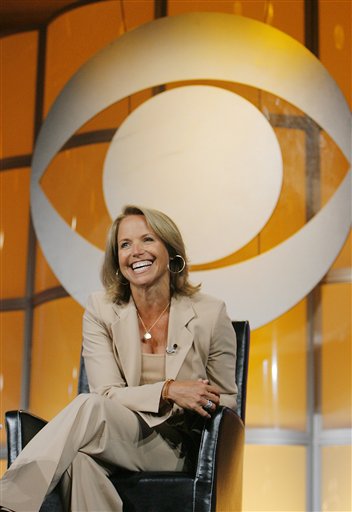 With the oldest viewership of all the major networks, it's quite the surprise that CBS has announced that it will broadcast the new CBS Evening News With Katie Couric live on the Internet every night from Sept. 5. CBS has been troubled lately, and claims the lowest-rated evening news among all the networks.
With the oldest viewership of all the major networks, it's quite the surprise that CBS has announced that it will broadcast the new CBS Evening News With Katie Couric live on the Internet every night from Sept. 5. CBS has been troubled lately, and claims the lowest-rated evening news among all the networks.But is it really a surprise?
Reaching for the young professional demographic, that Blackberrys-and-Gawker sweetspot, is probably the best medicine for CBS's ailments. CBS Digital Media President Larry Kramer said the new technique will give the demographic the news they need while toiling away in the office - and luring them to keep watching when they get off early:
“Anybody who can watch the news from start to finish at home on a 50-inch screen is going to do that, but a growing proportion of the population isn’t home to watch the evening news. The web audience is younger and we can build younger viewers into the evening news. When they’re exposed to it, they will appreciate it and they will watch it when they’re at home.”
In the process, Kramer realized that no one TiVo's the nightly news:
“News and this broadcast have short shelf lives by nature. Putting up a broadcast like this four to five hours later isn’t going to have near the same attraction it does when it’s live because things change in news."
Though the other networks haven't admitted they're going to roll out the same thing, I can't help but applaud CBS for moving and shaking when the others are fighting. This development is something that should have happened awhile ago, and it seems YouTube put the indirect pressure on the industry to do it. It makes only logical sense to simulcast the news - I've been praying the sports networks blow this dam wide open for those of us whose local teams aren't, well, local - and it's amazing to me that it's taken this long.
Now all they need is a new revenue model for all that increased traffic. Hmm, maybe being on the bottom of the totem pole isn't so bad after all.


![Editorialiste [at] gmail](https://blogger.googleusercontent.com/img/b/R29vZ2xl/AVvXsEjzDvlHqUd5msfCmRq2Q5EZRpn_nbVg33bjiUhLEigM_5fudZhIHvuAVxB4_MS0xn-cQ0EKyjxOua1ysQ4NdMzyvhg1oSVTv6OJAarhVTqG0BBkJKTjqBhwMjrMGOANWxT8l8rKFg/s220/editorialiste_logo.jpg)
No comments:
Post a Comment